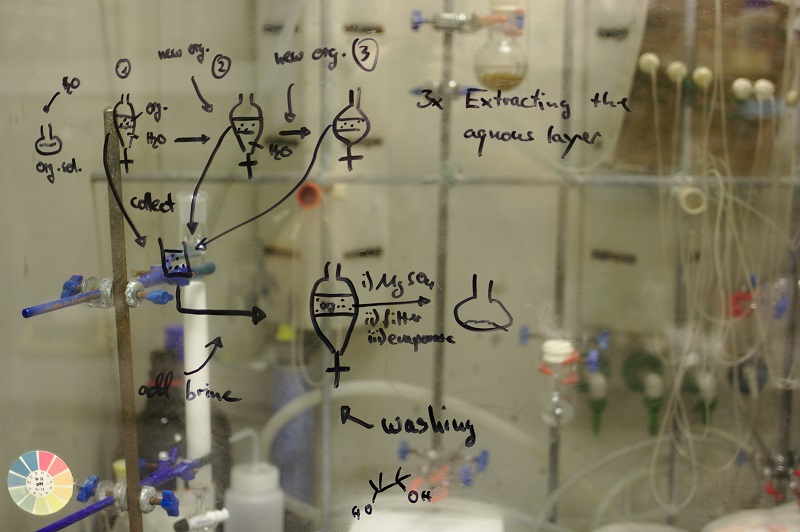In today’s competitive digital landscape, SaaS businesses need a sharp, well-thought-out marketing strategy to stand out. While it’s easy to get lost in the myriad of tactics available, it’s equally important to avoid common pitfalls that can hamper growth and customer retention. In this article, we’ll explore the most frequent mistakes in SaaS marketing and provide practical solutions to steer clear of them.
What is SaaS Marketing?
Software as a Service (SaaS) marketing is the process of promoting and selling subscription-based software products delivered over the internet. Unlike traditional software, which requires users to purchase and install a product on their devices, SaaS allows customers to access the software via the cloud on a subscription basis, often with a pay-as-you-go model. This makes SaaS a highly scalable solution for businesses of all sizes.
The primary goal of SaaS marketing is to attract, convert, and retain customers while building long-term relationships. Because SaaS products often involve ongoing subscriptions, the focus is not only on acquiring new customers but also on keeping existing ones engaged and happy over time.
Key aspects of SaaS marketing include:
- Lead Generation: Attracting potential customers to your product through various marketing channels such as SEO, content marketing, social media, and paid ads.
- Conversion: Turning those leads into paying customers through effective landing pages, trials, demos, and a well-defined sales funnel.
- Customer Retention: Ensuring customers continue to use the product, renew subscriptions, and potentially upgrade their plans.
What is SaaS Marketing Strategy for B2B Businesses?
A SaaS marketing strategy for B2B (Business-to-Business) businesses is specifically designed to promote SaaS products that are tailored to meet the needs of other businesses. Unlike B2C (Business-to-Consumer) marketing, which targets individual consumers, B2B SaaS marketing focuses on acquiring and retaining business clients. This strategy is more complex and often involves a longer sales cycle, more decision-makers, and larger contracts.
Pitfall 1: Focusing Too Much on Acquisition and Ignoring Retention
Many SaaS companies get caught up in chasing new customers and forget that retaining existing ones is equally important. Customer retention is often cheaper than acquisition, and loyal customers are more likely to refer others.
Why Retention is as Important as Acquisition
Customer churn is a huge problem in the SaaS industry, and ignoring retention strategies can hurt your long-term growth. Focusing solely on acquisition may lead to an unsustainable model.
Strategies for Effective Customer Retention
- Offer regular product updates and features that add value.
- Engage with your users through personalized emails and loyalty programs.
- Focus on customer support and ensure that every customer issue is resolved promptly.
Pitfall 2: Not Clearly Defining Your Target Audience
One of the most common mistakes in SaaS marketing is not having a clear understanding of your ideal customer. Without this focus, your marketing efforts can be wasted on people who are unlikely to benefit from your service.
The Importance of Understanding Your Ideal Customer Profile
Knowing your target audience helps you tailor your messaging, identify the right channels, and create content that resonates with them.
Steps to Define Your Target Audience
- Use data and analytics to identify your best customers.
- Create buyer personas that reflect your ideal customer’s needs and pain points.
- Regularly review and update your customer profiles to ensure relevance.
Pitfall 3: Ignoring Customer Feedback
Customer feedback is a goldmine for improving your product and marketing strategies. Ignoring it can mean missing out on valuable insights that could lead to increased satisfaction and loyalty.
Why Feedback is Crucial for SaaS Marketing Success
Customer feedback allows you to make data-driven decisions. It helps improve your product, customer experience, and marketing efforts.
How to Collect and Use Customer Feedback Effectively
- Implement surveys and interviews to gather detailed insights.
- Use customer service touchpoints as an opportunity for feedback.
- Continuously refine your product and marketing based on feedback.
Pitfall 4: Overcomplicating Your Product Offering
SaaS products can quickly become too complex, which can alienate potential customers. When you overcomplicate the user experience, it can lead to confusion and frustration.
The Dangers of Complexity in SaaS Products
Complex products often require a long learning curve, which can deter new customers. Complicated interfaces can also make customer support more difficult and increase churn.
Simplifying Your Product to Improve User Experience
- Focus on your core features and streamline the user interface.
- Offer clear tutorials and resources to help customers get started.
- Regularly evaluate your product to remove unnecessary complexity.
Pitfall 5: Neglecting the Role of Content Marketing
Content marketing is a key driver for SaaS growth. It helps educate your audience, builds trust, and attracts organic traffic.
Content Marketing’s Impact on SaaS Growth
High-quality content can establish your brand as an authority in your industry. It drives inbound traffic and nurtures leads.
How to Build a Content Strategy that Works
- Create valuable blog posts, case studies, and videos that speak to your target audience.
- Focus on solving customer pain points with educational content.
- Promote your content across various channels for maximum reach.
Pitfall 6: Failing to Personalize Marketing Efforts
Personalization is crucial in today’s marketing landscape. Generic messaging can fail to capture the attention of potential customers.
The Power of Personalization in SaaS Marketing
Personalized marketing helps to build a connection with your audience and makes them feel valued, which increases the likelihood of conversion.
Tips for Creating Personalized Campaigns
- Use customer data to tailor email marketing campaigns.
- Offer customized product recommendations based on user behavior.
- Personalize your landing pages to reflect the interests of visitors.
Pitfall 7: Relying on a Single Marketing Channel
Focusing all your efforts on one marketing channel, like social media or PPC ads, can limit your reach and growth potential.
The Risks of Single-Channel Marketing
Relying on one channel puts your business at risk if that platform’s algorithm changes or becomes less effective.
Multi-Channel Marketing Strategies for SaaS
- Diversify your marketing efforts across social media, email, SEO, and paid ads.
- Integrate all your channels to create a seamless customer experience.
- Track performance across channels to optimize your strategy.
Pitfall 8: Not Aligning Sales and Marketing Teams
When sales and marketing teams work in silos, it can lead to inefficiencies and missed opportunities.
Why Sales and Marketing Alignment Matters
When both teams are aligned on goals, customer personas, and messaging, the sales process becomes smoother, and lead conversion rates increase.
How to Foster Collaboration Between Teams
- Hold regular meetings to ensure alignment on strategy and goals.
- Use shared tools and platforms for collaboration.
- Create joint campaigns that combine the strengths of both teams.
Pitfall 9: Underestimating the Importance of SEO
SEO is vital for organic growth. Without it, your SaaS business may struggle to rank on search engines, missing out on potential leads.
How SEO Drives Organic Growth for SaaS
SEO ensures that your SaaS website appears in front of the right audience when they search for relevant keywords.
Key SEO Tactics to Implement in Your Strategy
- Optimize your website for relevant keywords.
- Focus on building high-quality backlinks.
- Ensure your website is fast, mobile-friendly, and easy to navigate.
Pitfall 10: Overlooking Customer Onboarding
An effective onboarding process can make or break a customer’s experience with your SaaS product. Neglecting this process can lead to increased churn.
The Importance of a Smooth Onboarding Experience
A great onboarding experience helps new users understand how to use your product, increasing the chances of long-term retention.
Tips to Enhance Your SaaS Onboarding Process
- Offer easy-to-follow tutorials and walkthroughs.
- Provide in-app guidance and support options.
- Continuously test and improve your onboarding process based on user feedback.
Pitfall 11: Ignoring Analytics and Data
Without tracking your marketing efforts, it’s impossible to know what’s working and what’s not. Data-driven decisions are crucial for continuous improvement.
Why Data-Driven Decisions Are Essential
Analytics help identify trends, optimize strategies, and allocate resources effectively.
Tools for Tracking and Analyzing Marketing Performance
- Use tools like Google Analytics, HubSpot, and Mixpanel to track user behavior.
- Set up dashboards to monitor key metrics like customer acquisition cost and lifetime value.
Pitfall 12: Failing to Nurture Leads
Many SaaS businesses fail to nurture leads effectively, resulting in lost opportunities. Lead nurturing is essential for converting prospects into paying customers.
The Importance of Lead Nurturing in SaaS Marketing
Effective nurturing helps build relationships with prospects and guides them through the sales funnel.
Best Practices for Nurturing Your Leads
- Use email marketing to stay in touch and provide value.
- Offer free resources like webinars, case studies, and trials.
- Segment your leads based on their interests and behavior.
Pitfall 13: Not Adapting to Market Changes
SaaS businesses must remain agile and ready to pivot in response to market trends and customer demands.
Why Flexibility is Key in SaaS Marketing
The SaaS industry is constantly evolving, and sticking to outdated strategies can harm growth.
How to Stay Agile in a Changing Market
- Monitor industry trends and adjust your marketing strategy accordingly.
- Collect and act on customer feedback regularly.
- Foster a culture of innovation within your marketing team.
Conclusion
Avoiding these common pitfalls can significantly enhance your SaaS marketing strategy. By focusing on retention, personalization, multi-channel marketing, and continuously gathering data, you can stay ahead of the competition and drive sustainable growth. Remember, a successful SaaS marketing strategy isn’t about avoiding mistakes entirely, but learning from them and adapting your approach for better results.
FAQs
What are the most important factors for a successful SaaS marketing strategy?
A successful strategy focuses on customer retention, personalization, SEO, and consistent data analysis.
How can I improve customer retention in my SaaS business?
Focus on delivering continuous value through product updates, personalized experiences, and responsive customer support.
What role does SEO play in SaaS marketing?
SEO drives organic traffic to your website and increases visibility, leading to more leads and conversions.
How do I align my sales and marketing teams effectively?
Regular communication, shared tools, and joint campaigns help ensure both teams are working towards the same goals.
Why is customer feedback important in SaaS marketing?
Feedback provides insights that can improve your product, enhance customer experience, and optimize marketing strategies.




